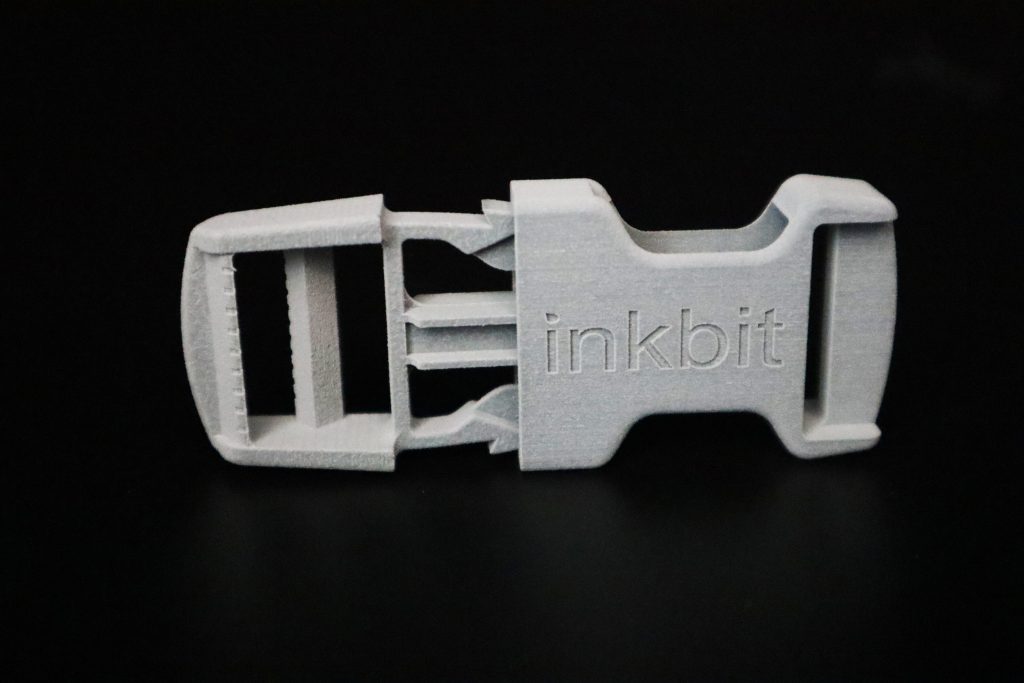Multi-material 3D printer developer Inkbit has announced a partnership with on-demand 3D printing service provider Makelab.
Not only does this partnership expedite time to market, but it also enables more flexible hardware development and extends the reach of Inkbit’s Vision-Controlled Jetting (VCJ) technology, aiding a diverse spectrum of manufacturers and designers.
“The Inkbit Vista system integrates cutting-edge precision and material versatility, enabling us to educate and transition our existing customers onto a more advanced platform and a new era of prototyping possibilities,” said Christina Perla, Co-Founder and CEO of Makelab. “Our partnership sets the stage for a new wave of agile hardware development and promises to further evolve the additive manufacturing landscape.”

Advancing access to Vision-Controlled Jetting and materials for prototyping
This alliance provides more opportunities for companies to use VCJ technology and explore new materials in their prototyping work. These companies come from various industries, such as consumer packaged goods, hardware, and industrial design, and are interested in finding precise and advanced materials to improve their prototyping processes.
The introduction of VCJ technology has brought forth new materials, specifically Vulcan Soft Elastomer and Titan Tough Epoxy, which Makelab also refers to as “Soft Elastic” and “Tough Epoxy.” These materials enhance the precision and detail achievable in 3D printing, with emerging applications encompassing precision components, liquid-holding seals, and specialized gaskets.
“Collaborating with Makelab was a logical progression in our dedication to offering customers an expedited route to the future of product development,” says Davide Marini, Co-Founder and CEO of Inkbit. “Working with Makelab allows us to harness their expertise in on-demand 3D printing and pair it with the Inkbit VCJ technology, creating new avenues for functional prototyping and streamlining the transition from design to production.”
Hydrific, a subsidiary of Lixil and a customer of Makelab since 2022, stands as one of the early adopters of this collaboration. Its experience showcases the significant impact of VCJ technology on their project, which focuses on addressing water conservation, utilization, and sustainability in residential hardware. Using Vulcan Elastic, also known as “Soft Elastic” at Makelab, Hydrific achieved meticulous prototyping of gasket components for its product, achieving a level of precision and fit unparalleled by other materials currently available. Given its exacting requirements, Soft Elastic was an ideal choice for Hydrific’s prototyping needs.

Vision-Controlled Jetting technology making headlines
Inkbit secured a £1.7 million Small Business Innovation Research (SBIR) contract from the US Air Force to create three 3D printing systems for nationwide base use. This contract aimed to enhance technical capabilities and software tools for improving Inkbit’s 3D printer production output. These 3D printers, initially among the company’s commercial systems, benefited from prior funding by the Defense Advanced Research Projects Agency (DARPA) for Inkbit’s proprietary vision system. The SBIR contract involved developing three closed-loop feedback 3D printing systems utilizing VCJ technology, with the Texas National Guard receiving the first deployment.
Inkbit launched its first commercial 3D printer operating on MIT’s VCJ technology, dubbed Inkbit Vista. This system utilizes 3D machine vision and artificial intelligence (AI) for closed-loop control, making it suitable for rapid prototyping and end-use production in various industries, including robotics, dental, automotive, and packaging. VCJ’s innovation lies in its real-time, in-situ control, enabled by voxel-level 3D scan data, ensuring precision and reliability. Developed at MIT’s Computer Science and Artificial Intelligence Laboratory (CSAIL) and exclusively licensed to Inkbit, the process was patent-protected.
Who will win the 2023 3D Printing Industry Awards? Make your nominations now!
What does the future of 3D printing for the next ten years hold?
What engineering challenges will need to be tackled in the additive manufacturing sector in the coming decade?
To stay up to date with the latest 3D printing news, don’t forget to subscribe to the 3D Printing Industry newsletter or follow us on Twitter, or like our page on Facebook.
While you’re here, why not subscribe to our Youtube channel? Featuring discussion, debriefs, video shorts, and webinar replays.
Are you looking for a job in the additive manufacturing industry? Visit 3D Printing Jobs for a selection of roles in the industry.
Featured image shows the Inkbit Vista 3D printer. Photo via Inkbit.



